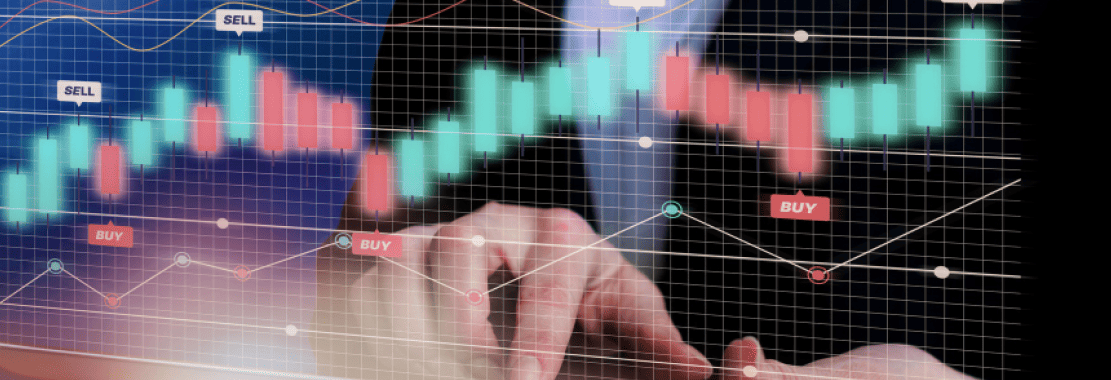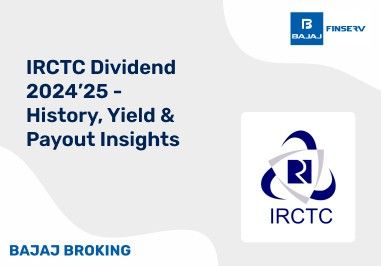You might have encountered the term “Wholesale” multiple times. It simply represents the bulk quantity of a commodity before it reaches the retail market. The term is quite commonly used even in everyday life, but it plays a vital role for those involved in the stock market.
Let’s discuss the Wholesale Price Index, which represents the average price change of a bulk commodity that has yet to reach the market. While it sounds simple, there’s a lot more to it.
What is WPI Full Form?
To begin with, WPI stands for Wholesale Price Index and it plays a vital role in the stock market as it helps investors make better decisions about their money. WIP is commonly used by investors to predict the price of any commodity even before it reaches the retail market.
Understanding the Concept of Wholesale Price Index (WPI)
Let’s delve into the question: What is WPI? Wholesale Price Index is an integral part of the market as it helps measure inflation and investors often rely on it to make an informed decision. Let’s break down WPI for a better understanding of the concept:
Wholesale Price Index measures the average change in price of goods and commodities before they reach the retail or consumer market. It focuses on price changes when the commodity is still being traded between corporations and not available for the consumer market. As the whole price index and consumer price index differs, it helps in evaluating inflation, demand and supply.
The first-ever WPI report was published by The Office of the Economic Adviser to the Government of India. It included an index number of wholesale prices of around 23 commodities between August 19, 1939 to January 10, 1942. Since then there have been multiple changes in the way India viewed WPI.
The inclusion of non-agricultural commodities was a major change. In the 1970-71 series, the National Industrial Classification (NIC) came up with an efficient way of calculating WPI by weighing in three crucial sectors of a commodity: Primary Articles, Manufactured Goods and Fuel and Power. Till date, India uses these three sectors in calculating WPI.
Additional Read: What is Demat Account: Importance, Features and Types
How Does Wholesale Price Index Work?
A Wholesale Price Index (WPI) measures changes in the prices of goods at the wholesale level, helping track inflation and economic trends. It is calculated monthly, with a base value set at 100 for a specific period. Any price fluctuations in subsequent months determine the new index value. For example, if the month in question is August and the price level saw an increase of 5% in 1 year, then the WPI for August in the next year will be 105.
The WPI primarily includes commodity prices, though the number of products considered varies by country. While smaller economies may track a few hundred products, larger nations include thousands to ensure an accurate reflection of market trends.
WPI Calculation
Now that you know What is WPI and its importance n the stock market, let’s take a look at WPI calculation:
To calculate WPI, you have to evaluate three main components: Primary Articles, Manufactured Goods and Fuel and Power. These components are evaluated to include all the initial cost incurred on manufacturing or producing any commodity.
Now, using the above-mentioned components, you can easily calculate by WPI formula:
Current Price / Base Period Price) × 100.
Let’s take an example to further simplify this: Say the price of a commodity was ₹4,000 in 2013 and it reached ₹5,000 in 2023. Using the WPI formula we divide this amount: 5000/4000= 1.25. Now 1.25 * 100 is 125. Since WPI is measured in percentage we subtract 100 (base year value) by 125 and get 25 as the final value.
Before we move ahead, remember that another factor that plays a major role in WPI is the base year. A base year is the anchor against which any index is calculated. It marks the first year in the series of years that is to be calculated to find an index. For ease of calculation, the base year has been assigned a default value: of 100. However, the value is subject to change depending on the market conditions etc.
Difference Between WPI and CPI
As discussed above, WPI tracks the price of commodities that are being traded between corporations and have not yet reached the retail market. This simply suggests that the index used for calculating the overall price change of a commodity doesn’t end at WPI, it includes CPI i.e. consumer price index.
Let’s understand the key differences between WPI and CPI:
Area of Focus: As the name suggests, the Wholesale Price Index deals with the price of commodities that are being traded between corporations, and CPI focuses on the price of goods and services in the consumer market.
Both WPI and CPI play a role in measuring inflation. However, since CPI includes price changes in both goods and services it has emerged as a more reliable method to measure inflation in India.
What is the Purpose of the WPI Index?
Wholesale Price Index is used in the market and by the government for multiple purposes.
For starters, WPI impacts the consumer market. Higher inflation in whole prices will automatically reflect in the retail prices affecting the consumer and household making it concerning.
Secondly, the wholesale price index is taken as a reliable index for the government to adjust prices and taxes at an early stage to reduce the chances of an economy facing turmoil.
Thirdly, traders interested in commodity future contracts also evaluate WPI to make an informed decision.
Additional Info: Since WPI is such a critical metric for the economy, it is published duly by the Office of Economic Advisor, Department of Industrial Policy and Promotion under the Ministry of Commerce and Industry.
Why is the Wholesale Price Index (WPI) Important for the Economy?
Now that we are on the topic, it is important to touch on WPI’s role in business and trade while also understanding how it helps in inflation measurement.
The Wholesale Price Index works like an early indication for businesses and trade. Businesses rely on WPI to formulate their strategic planning by predicting cost, managing inventory and work on overall production planning.
Additionally, a higher WPI impacts the general cost in the consumer market hitting the demand and supply change that impacts trade and investors’ decisions.
The government in India relies on the Wholesale Price Index to decide its monetary policies. Let’s say the WPI reflects an upward price change of certain goods and commodities, this would impact the price of when these goods and commodities reach the retail market. Policies are formed to manage this inflation by luring investors with promising returns etc.
Wholesale Price Index (WPI) in India
Wholesale Price Index is of vital importance for the government and although CPI offers a more comprehensive evaluation, WPI continues to help the government measure inflation and amend prices. Let’s take a look at how:
The Wholesale Price Index reflects the average change of bulk commodities before it reaches the consumer market making it important for the government to keep an eye on WPI to formulate its monetary policies to curb extreme price rise for the consumer market.
WPI, in India, as a metric is used for almost every sector including the primary, secondary and tertiary sectors. Below listed are the sectors where WPI plays a significant role:
Additional Read: Differences Between Nifty and Sensex
Limitations of the Wholesale Price Index (WPI)
While there are multiple purposes that WPI serves, it has its set of limitations including:
Possibly the biggest limitation of WPI is that it does not include price changes for any services. The Wholesale Price Index reflects the price movement of only goods and commodities. Services play a crucial role in measuring inflation, determining price movements and a lot more. The exclusion of the service sector limits its usage for investors and the government as well.
A Global Price Index is another key metric for countries to gauge their economic growth. It includes the average price change of goods and services in terms of exports and imports. WPI excludes services that restrict its importance in understanding global price indices or import and export price indices.
Conclusion
Evaluating price inflation at the initial level serves as a key metric in determining the price of a commodity when it finally reaches the retail market. Traders, investors and the government use WPI to make informed decisions. Despite its limitations, the wholesale price index is considered a reliable factor in evaluating demand and supply dynamics. As recommended by experts, if one wishes to predict price movements in the market a combined view of WPI and CPI works the best.
Disclaimer: Investments in the securities market are subject to market risk, read all related documents carefully before investing.
This content is for educational purposes only. Securities quoted are exemplary and not recommendatory.
For All Disclaimers Click Here: https://bit.ly/3Tcsfuc













